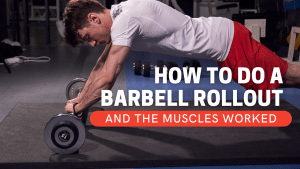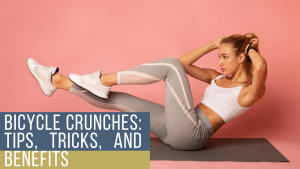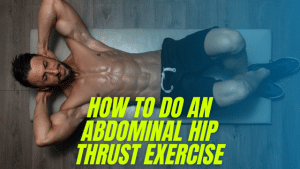What are the benefits of hanging leg raises and are they good for abs?
Performing hanging leg raises for your abs is not as common as performing sit-ups and crunches on the floor, and understandably so because hanging leg raises are tough, demanding, and painful. So it is not hard to see why many people stay away from this advanced core strengthening exercise and keep playing it safe with the classics; they know there isn’t much that could go wrong in doing exercises the body is already used to.
But while hanging leg raises are much more difficult, they can also be more rewarding if done correctly. Obviously, you will always have to start somewhere, and when it comes to abs exercises, most of the time that somewhere is on the floor. But as you keep training, sooner or later you will have to progress to something more challenging, and that is where the hanging leg raise comes in.
What is a hanging leg raise and how do you do it?
The hanging leg raise is an advanced isolation exercise that effectively targets the abdominal muscles. All the major core muscles—the rectus abdominis, transverse abdominis, and the obliques—are worked hard in this exercise, as the hip flexors, shoulders, and forearms stabilize the body to prevent it from swinging.
Basically, your entire upper body is engaged in this exercise while your lower body provides the resistance.
The main thing you need is a stable bar that is high enough to give your legs enough room to move and is stable enough to support your full body weight and withstand the additional force that comes with raising the legs and lowering them back down.
Now let’s proceed with the exercise, shall we?
- Hold on to the bar above your head with an overhand grip.
- Tilt your pelvis slightly backward and engage your abdominals and hip flexors to lift your legs off the ground and outward in front of you while keeping them straight. As you do this, breathe out and feel your abdominal muscles do the hard work.
- Raise your legs to a 90-degree angle, making them parallel to the ground.
- Bring your legs back to the ground slowly while still keeping the pelvic tilt. Make sure you are breathing in as you do this.
- Repeat for as many reps as you comfortably can. Ideally, you should do 3 sets of 10 repetitions each, but you may do fewer reps as long as you do the exercise correctly and with proper form.
The benefits of hanging leg raises
Stronger core
Needless to say, a stronger core is the main benefit of this exercise. You can immediately feel the impact and burn on your abs every time you engage your core to lift your legs, as long as you are doing it right. Just try this exercise for yourself and you will know (and feel) what we are talking about.
For optimal gains, keep your legs straight. But if this position is still too advanced for you, you may try the hanging knee raise instead. It is a little easier which makes it perfect for beginners, but works the intended muscles the same way a regular hanging leg raise does.
Stronger hip flexors
Aside from your core, hanging leg raises also strengthen your hip flexors. However, take note that the hanging leg raise is certainly not the best exercise for strengthening them—you have lunges and mountain climbers for that—but if your hip flexors really need improvement, then the hanging leg raise is definitely a good start.
Better stability
The hanging leg raise requires stability, and this exercise demands a lot of it. You know you are doing it correctly if you are bracing your core while keeping it stable all throughout.
Let’s compare this to the captain’s chair raises, a very similar exercise which engages the same muscles but with the help of, well, a captain’s chair instead of a bar. With this equipment, your upper body is supported by a backrest which already gives you better support in maintaining your stability and minimizing your momentum.
You don’t have this advantage with hanging leg raises because you need to rely solely on the strength of your upper body and core muscles to keep yourself steady, and this is what makes this exercise extremely challenging.
The most common mistakes during hanging leg raises
Using momentum
If there is too much swinging involved just for you to be able to get your legs up, then that is essentially cheating and cannot be counted as a legit leg raise. It is important that you are in complete control of your body throughout the entire range of motion, which includes the lowering phase.
Bring your legs back down in a controlled manner; don’t just drop them. If anything, the lowering of the legs is even more important than the lifting because it forces you to focus on the descent, or risk losing control of your movement which will make your body swing.
Losing the pelvic tilt
Your core is attached to your pelvis that is why to make the most out of hanging leg raises, it is vital to maintain a posterior pelvic tilt during the entire range of motion because this will keep the tension in your core throughout the exercise.
Not keeping the arms straight
You should not just be grabbing the bar with your hands during a hanging leg raise—you need to activate your lats as well so you can depress your shoulder blades down and back up as you grip the bar. This will engage your upper body more and allow you to further stabilize yourself and prevent any swinging.
However, make sure that your elbows remain locked as you raise your legs. Many people unknowingly compensate in this manner especially if the forearms get tired first before the core. For you to get full activation of the abs, refrain from letting your elbows help.
Slightly easier alternatives to the hanging leg raise
By “slightly easier,” we mean you don’t need to be hanging from a bar.
V-ups
This exercise requires you to go from a full body extension on the floor into a “V” by hinging your hips, contracting your core, and raising your straight legs and torso towards one another at the same time.
Flat Bench Leg & Hip Raises
This exercise has a similar movement pattern to the hanging leg raise, but in a lying down position as you grip the bench behind your head for additional support. Starting with your body fully extended, bring your legs upward to a 90-degree angle before bringing your hips and lower back upwards off the bench.
Fit Ball Knee Tucks
This exercise requires the lifting of the knees towards your chest similar to the movement in the hanging leg raise but without the extra challenge of gravity. However, you still need to stabilize yourself, and in this case, through your spine as you roll the ball away from you and extend your body.
While supporting your upper body on extended arms on the ground with your shins on the ball, move the ball towards you by tucking your knees in, and then away from you by extending your hips to go back to the initial position.
Double Crunch
The double crunch is an exercise that will have you flexing and extending through the core. It requires you to drive your chest towards your knees, and your knees towards your chest, thus using your core and your hip flexors just like in a hanging leg raise.
If you find V-ups challenging, this exercise is a good alternative since it is basically like a V-up but with bent legs. To begin, lie down on the ground with your body fully extended on the floor, and then bring both your chest and knees upwards at the same time to create a “V” then go back to the initial position.
Reverse Crunch
This core exercise requires you to lift the bottom half of your body instead of the top half by contracting your core. This makes it somehow similar to the hanging leg raise but with beginners in mind to help them build up the core strength they need to eventually do the hanging leg raise.
To begin, lie down on the ground with your arms on your sides and your legs bent at the knees. Then lift your feet off the ground and bring your hips and lower back upwards while contracting your abs.
Ready to raise?
Now that the wonders of the hanging leg raise have been established, it is also important to remember that while this is a highly effective exercise for the entirety of your core, it should not be thought of as an absolute answer to your muffin top woes. No matter how intense your abs exercise is, it is not going to do anything to get rid of your belly fat. The kitchen should be where you try to fix that, not just the gym.



